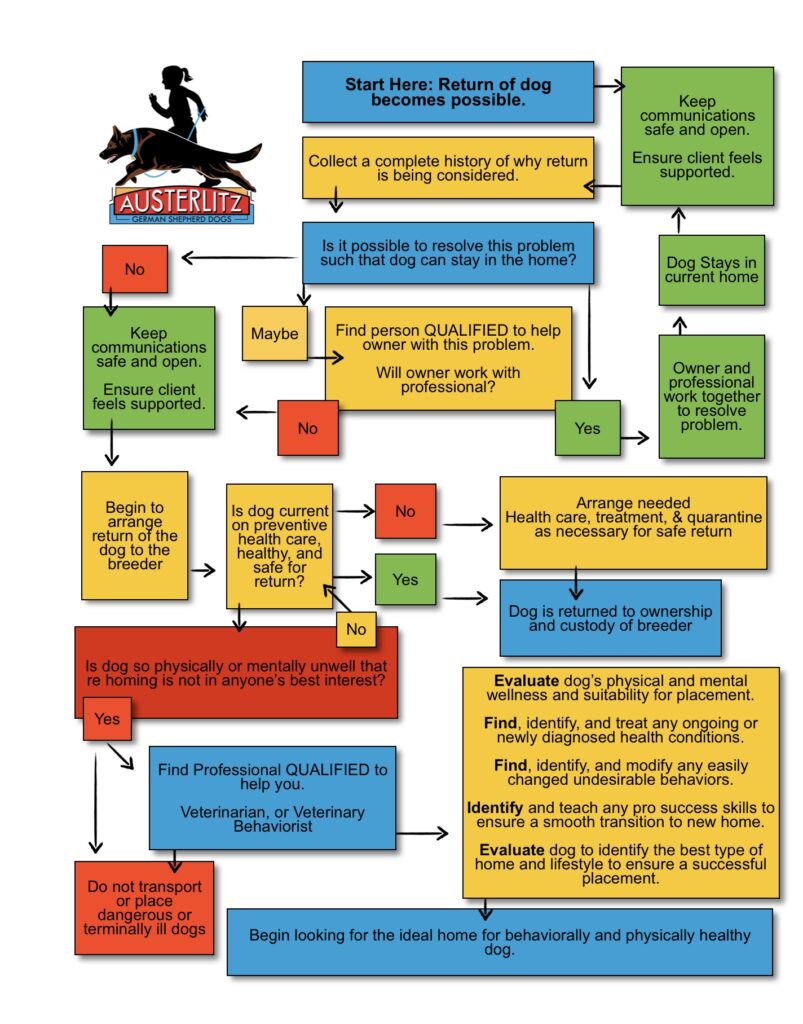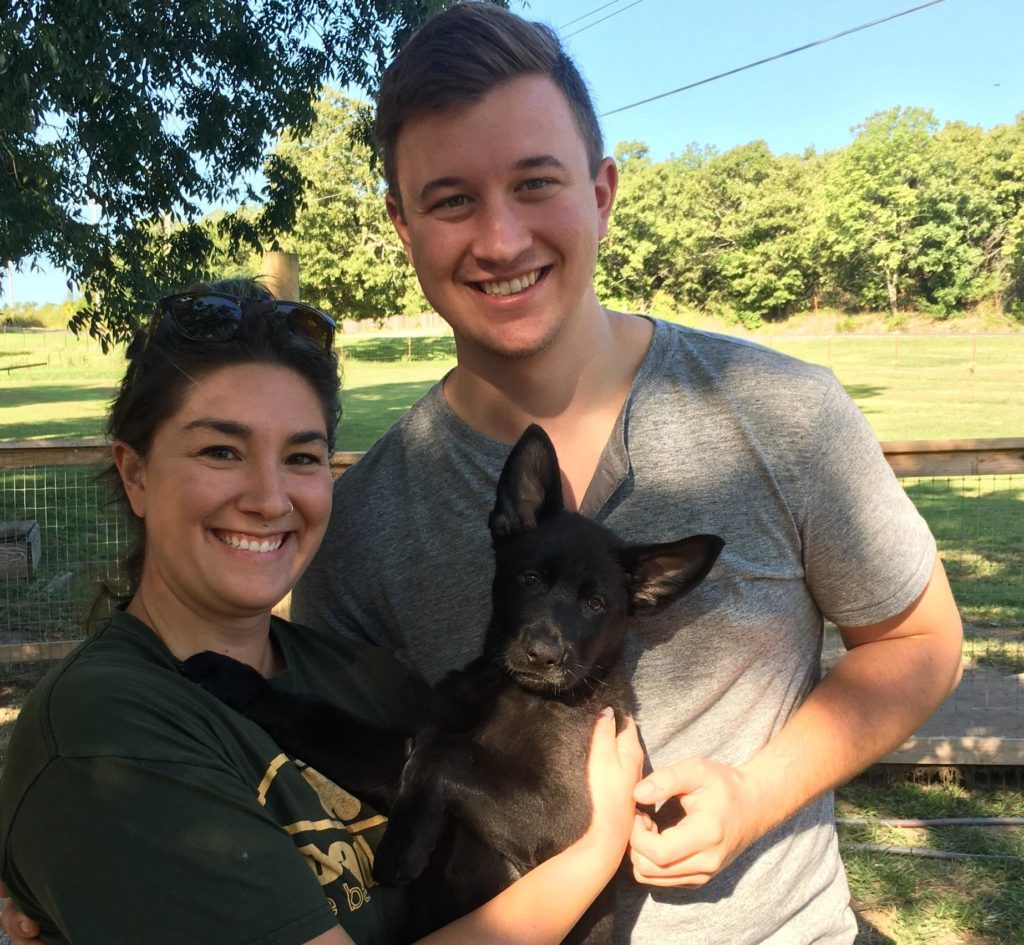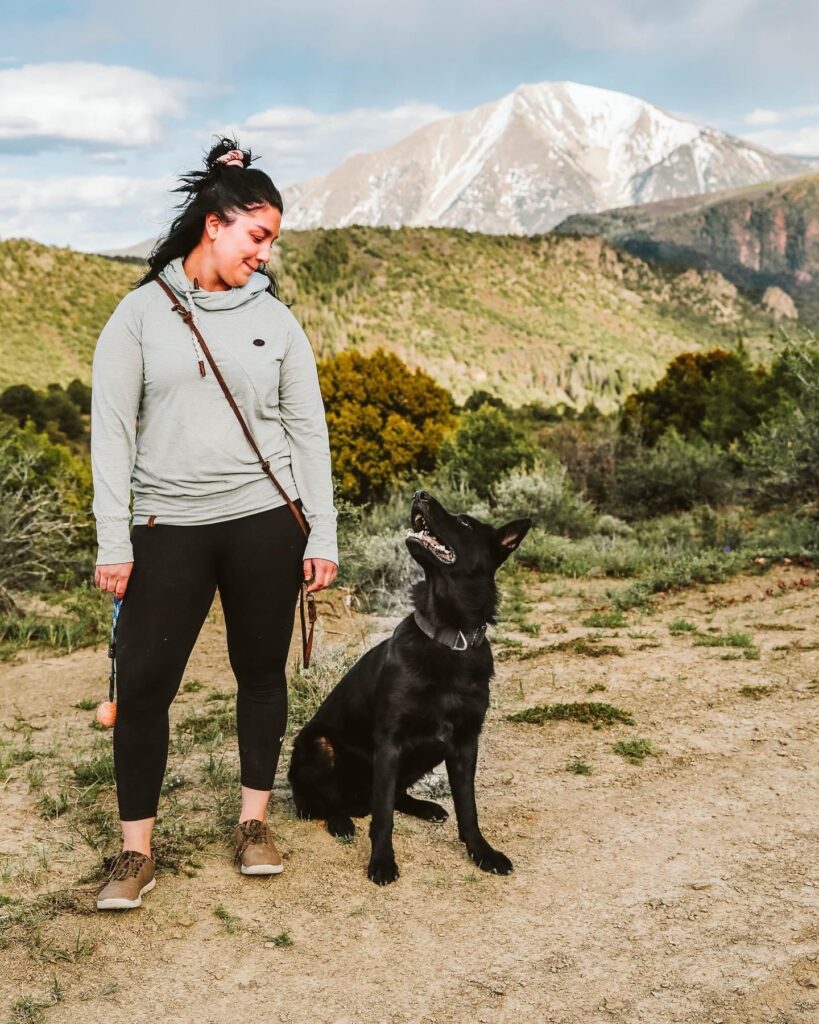Boomerang Dogs: When Bad Things Happen To Good Breeders Part 3
I had intended to make this a two part series, but I had so many requests to include the difficult subject of Boomerang Dogs (dogs who leave for new homes, but then come back) that I decided to add just one more part to the When Bad Things Happen To Good Breeders series.
It has become so accepted (and rightly so) that breeders have an open door policy towards all the dogs they place that we have now moved into the dismissive stage of this subject.
Now we hear calls of “get the dog back” or “return the dog” whenever relationships between people (breeder and buyer) or people and dogs (buyer and their dog) hit any rough patch.
But lets be clear, unless there is a very good reason for a dog to loose it’s home we should not be flippant or causal about it.
Are there some cases where it is in the best interest of the dog, or owner, for the dog to be returned? Absolutely. Here are some examples from my own program that I’m sure other breeders have experienced as well, that are simple and uncomplicated.
1. Owner is financially unable to provide for the dog (for any reason, but job loss is a common one).
2. Owner has lost access to dog friendly housing (after divorce for example).
3. Owner has passed on, or is so unwell that caring for the dog cannot happen.
4. Owner is caring for an unwell family member and the dog’s care is suffering.
5. Someone (a child, unwell adult, relative) has moved in and there is conflict in the home such that the dog is suffering from chronic stress or anxiety.
Are there cases where things are not so black and white? Of course, puppy blues are one, where the new puppy is actually causing so much distress and depression that everyone is suffering. Interdog conflict in the home, undesirable behaviors on the dog and human side, changes in work schedule. In these cases the job of the breeder is to tease out if the problem has a potential solution that benefits everyone (dog and humans) such that happiness is restored and everyone’s needs are met.
We should never take the loss of a home lightly, or even recommend it lightly, because it’s hard to promise the dog that the new home will be better for them, and indeed some dogs just don’t transition well, and a dog who was a good companion in one home may find adapting to a new home difficult, even impossible. These are decisions that deserve everyone’s best and most thoughtful work.
The Nuts and Bolts: Be ready, and hope you never need to be.
1. Breeders need to think about and decide upon their return policy, and all the ramifications of that, before their first litter is bred. Can’t take dogs back? Don’t breed dogs, because the breeder is the dog’s safety net in all times.
2. Budget funds for return. Some returned dogs will come in perfect health, others may not, be prepared for both.
3. Line up health experts to help you. Discuss the health ramifications of returning dogs with your vet, focus on contagious diseases especially those that may kill puppies (herpes, distemper, parvo), or destroy your entire breeding program (brucellosis) as well as the more common and less dangerous pathogens like internal/external parasites, viruses like kennel cough, dog flu, mange mites, and etc. Discuss quarantine options, costs, and etc.
4. Line up a behavior expert to help you. Find a credentialed behavior expert to help you. Breeders are not by default behavior experts, so unless you are a credentialed professional behavior specialist find one to advise you and evaluate dogs for you. This professional may be the key to keeping a dog in the current home, or helping you determine what would need to happen for this dog to be placeable once returned.
5. Make a list of options to help you: Dog transporters, trainers who can take dogs for evaluation or board/train, kennels that offer quarantine boarding, and etc. You may need to quickly get a dog from point A to Point B, You may need a professional to evaluate what needs to happen for the dog to be transitioned to a new home, and finally, dog may need to be quarantined while necessary health evaluation/treatment is done. Be ready, and hope you never need to be!
Best Practices:
1. Accept that you may be too emotionally invested to make good decisions (this is where your team of professional advisers can help you).
2. Detach your EMOTIONS about the situation from your ACTIONS. You may have very strong feelings about the situation, those are yours, don’t share them with the client and absolutely keep such talk off social media, save that venting for your closest friends and advisors.
3. Keeping number 2 in mind: Always treat your client with empathy, kindness, and respect. This is very difficult for breeders. Being a breeder does not mean we are expert in emotional intelligence, or have expert level communication skills. But, treating our client unkindly in any way increases the chances the dog will NOT have a great outcome. If we create an unsafe environment for sharing things that make US uncomfortable then our clients won’t share with us and that is really bad on many levels.
4. If you know that you struggle with conflict resolution, customer service skills, or empathetic listening and instead tend to let strong feelings lead to defensiveness and aggressive language towards our client then consider it part of your basic breeder toolbox to learn how to communicate with clients in an effective and professional manner.
5. Don’t assign fault. Don’t blame the client for the problem, don’t blame yourself for the problem, this isn’t helpful at all in the moment. Once the situation is fully resolved, FULLY resolved, and you have access to lots and lots of information then you can do detailed break down of what (if anything) went wrong, why it went wrong, and how/if this could be prevented in future. Remember if you decide the fault was the client’s, remember to give yourself a fair share of that blame because you CHOSE that client. Whenever we decide the client is at fault, we need to take a hard look at our placement interview process and criteria, reaching out to mentors, and even better (as they are not emotionally invested either) skilled legacy breeders for advice. If you find yourself tempted to assign fault with the client, without detailed reflection and data collection it’s very likely you are acting from a place of emotion, and trying to make yourself feel better. But feeling better may not teach us anything we can use going forward. Breeding dogs is really hard, to do it well we need to be tough, and that very often means being willing to be uncomfortable within ourselves as we learn. Always remember, life happens, there may not be anyone at fault!
Below you can find a visual of our potential return flow, this chart helps us determine if it’s possible to keep the dog in the present home, and steps to take to facilitate that, or if it’s in everyone’s best interest for the dog to leave it’s current home, and how to facilitate that. Each block could be a blog on it’s own, and of course not all possible outcomes (such as the dog moving directly from the present home to it’s new home) are covered here. You can download a copy below the chart!

Interested in more discussion on this subject, or any of those in our When Bad Things Happen To Good Breeder series? Be sure to sign up for our newsletter, follow us on Facebook, look out for our very own podcast (premiering soon with this very series!), and let us know how you handle these tough aspects of breeding.


